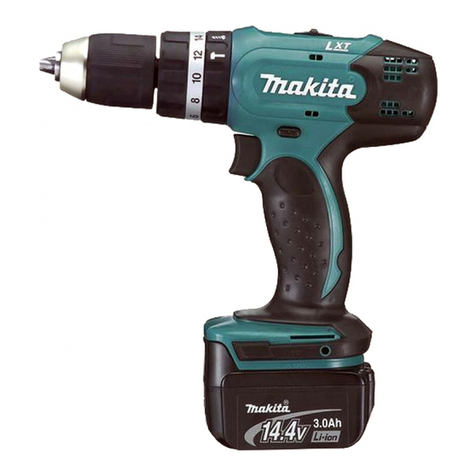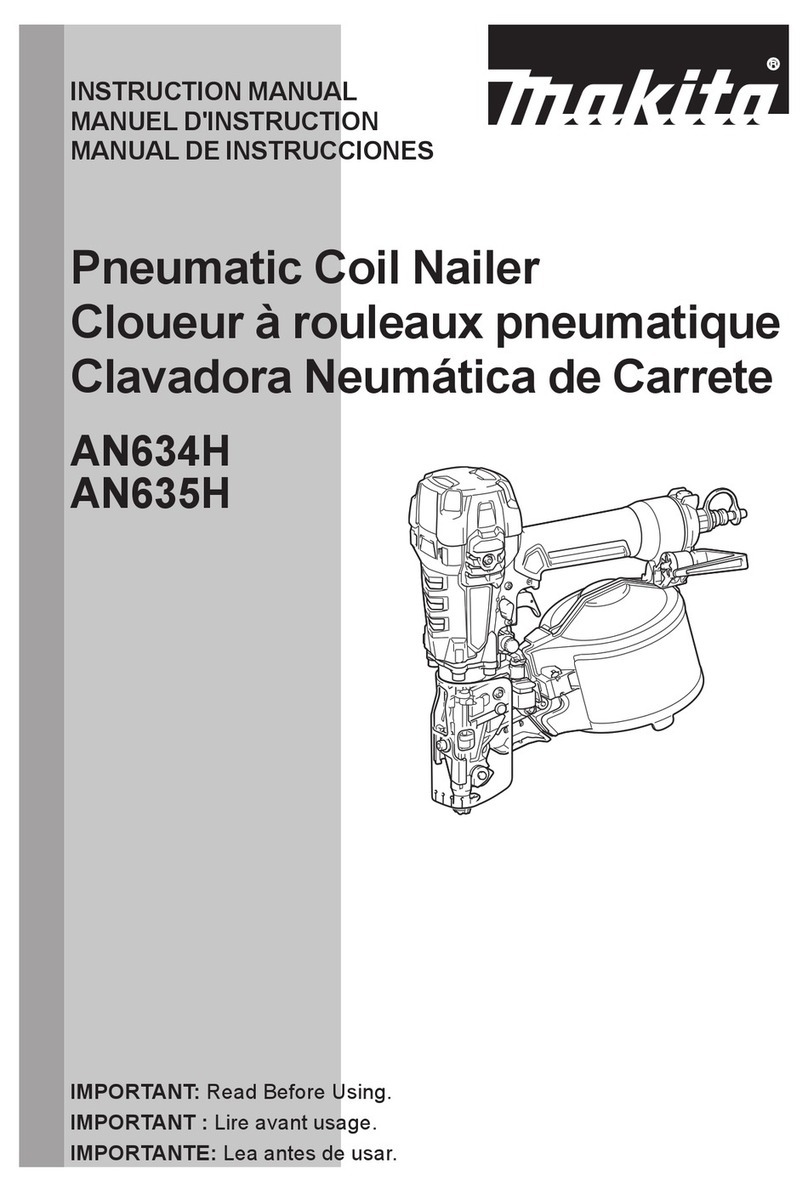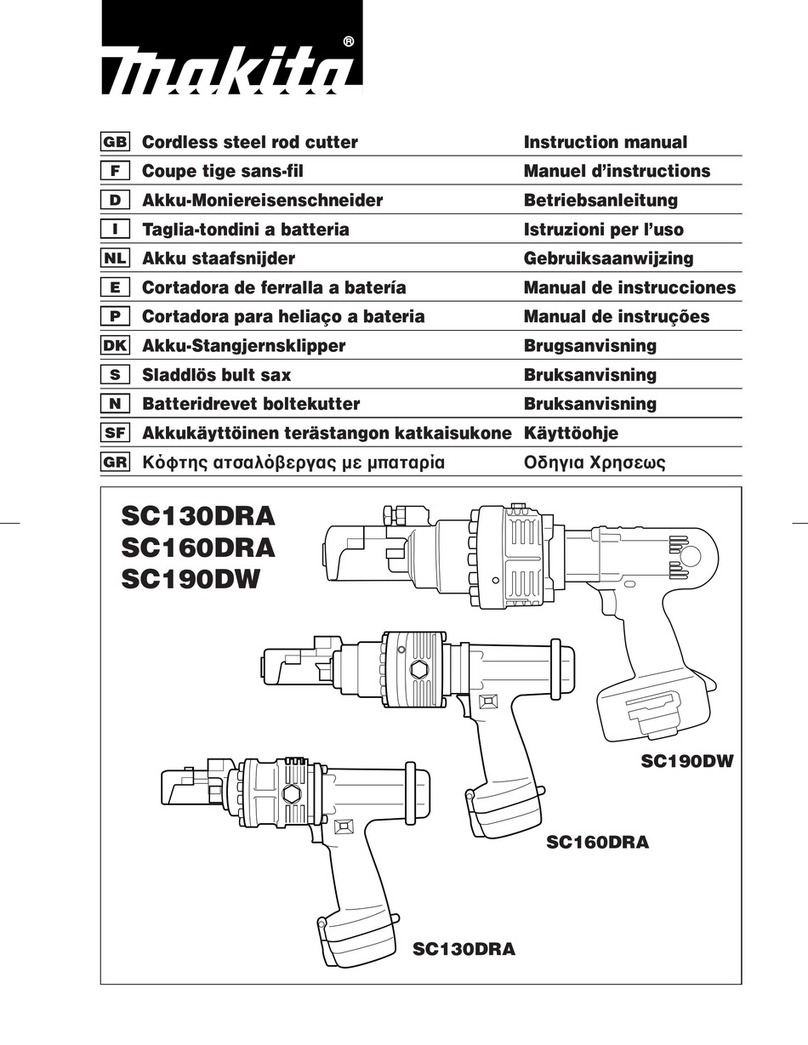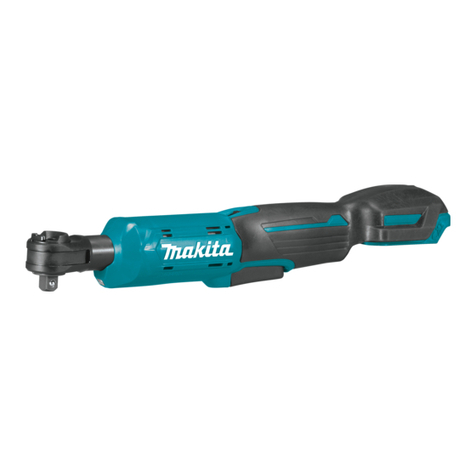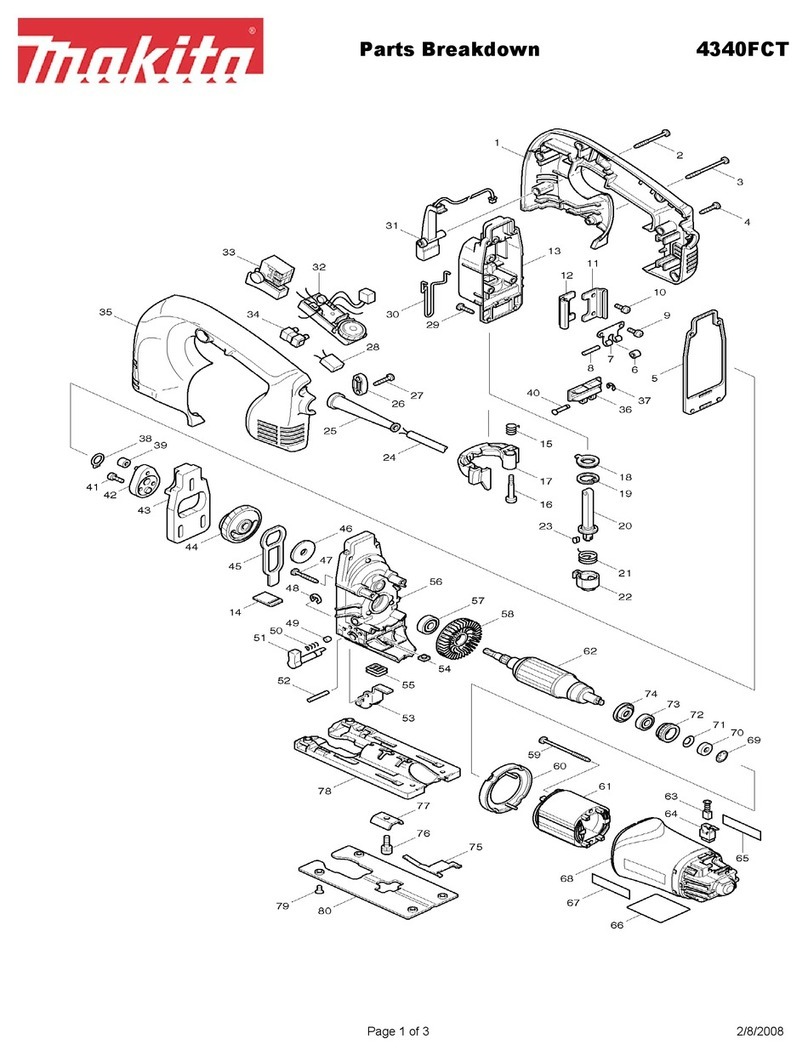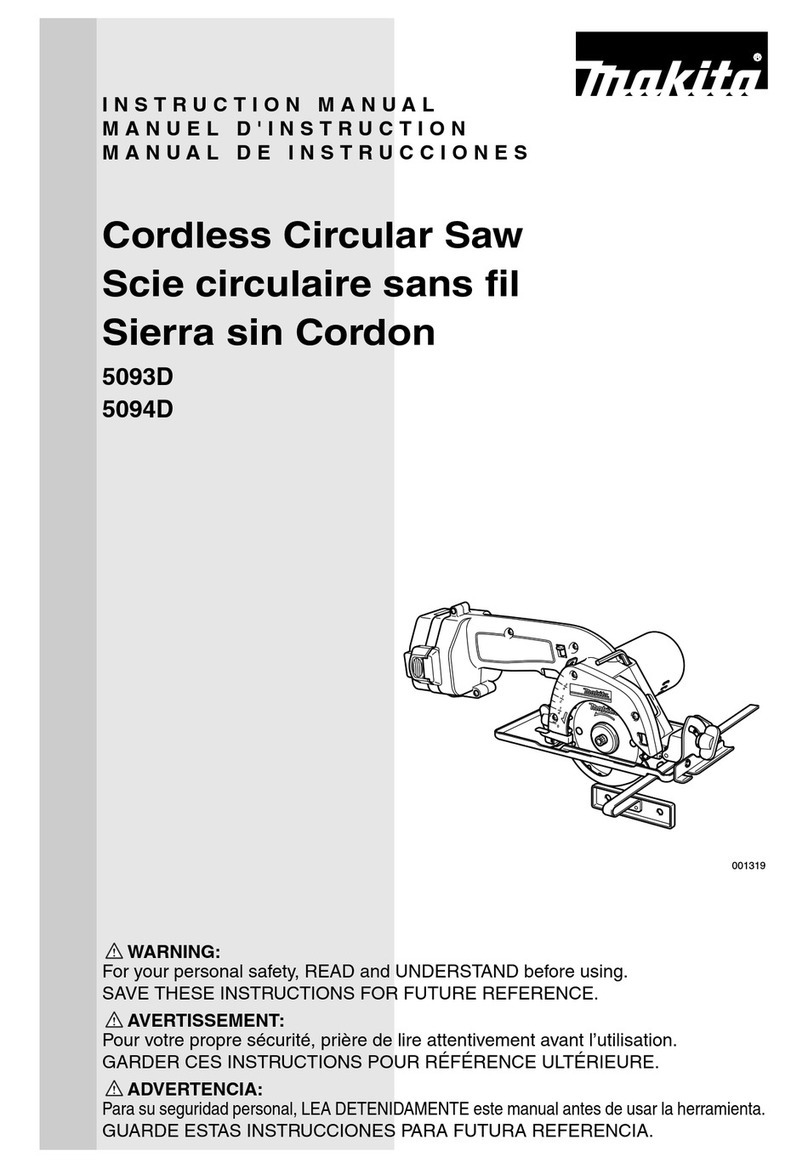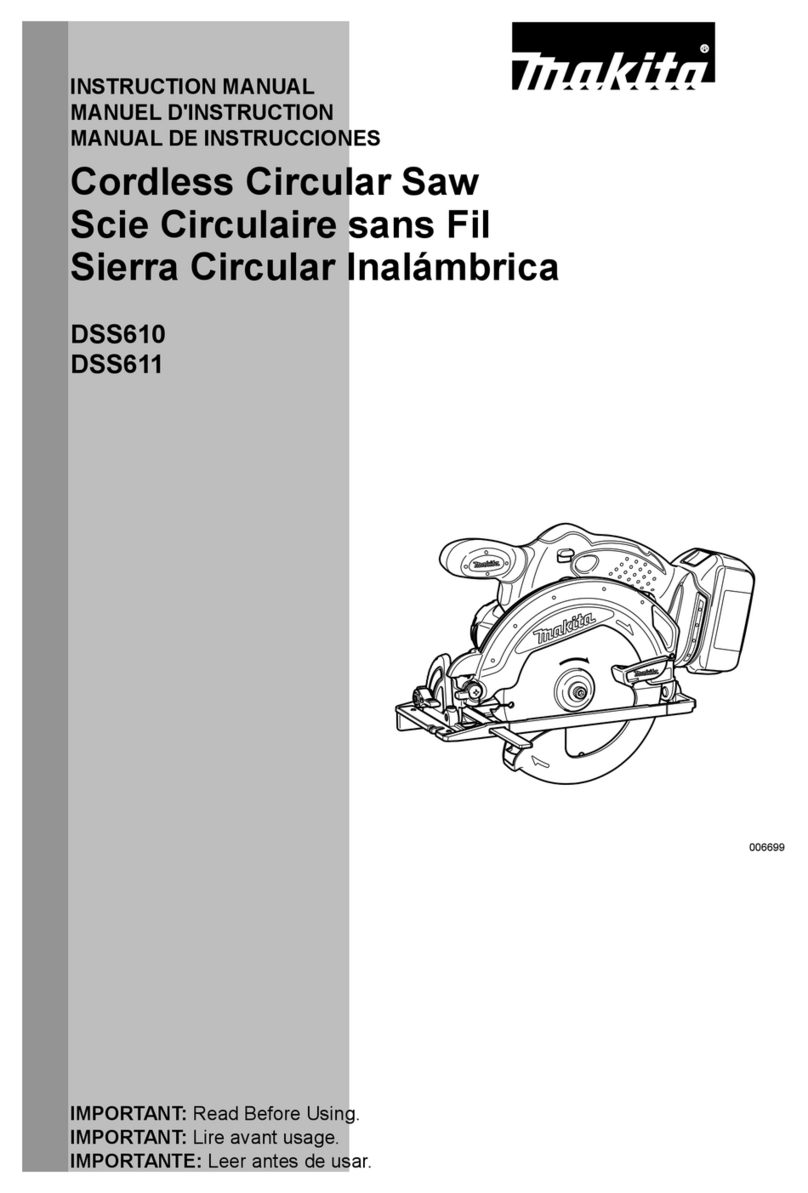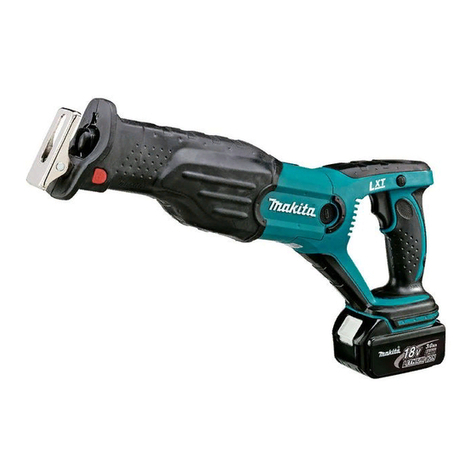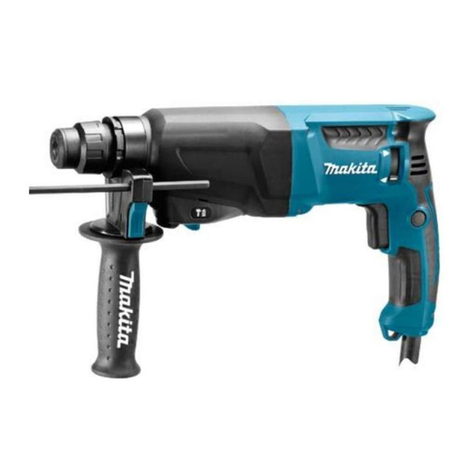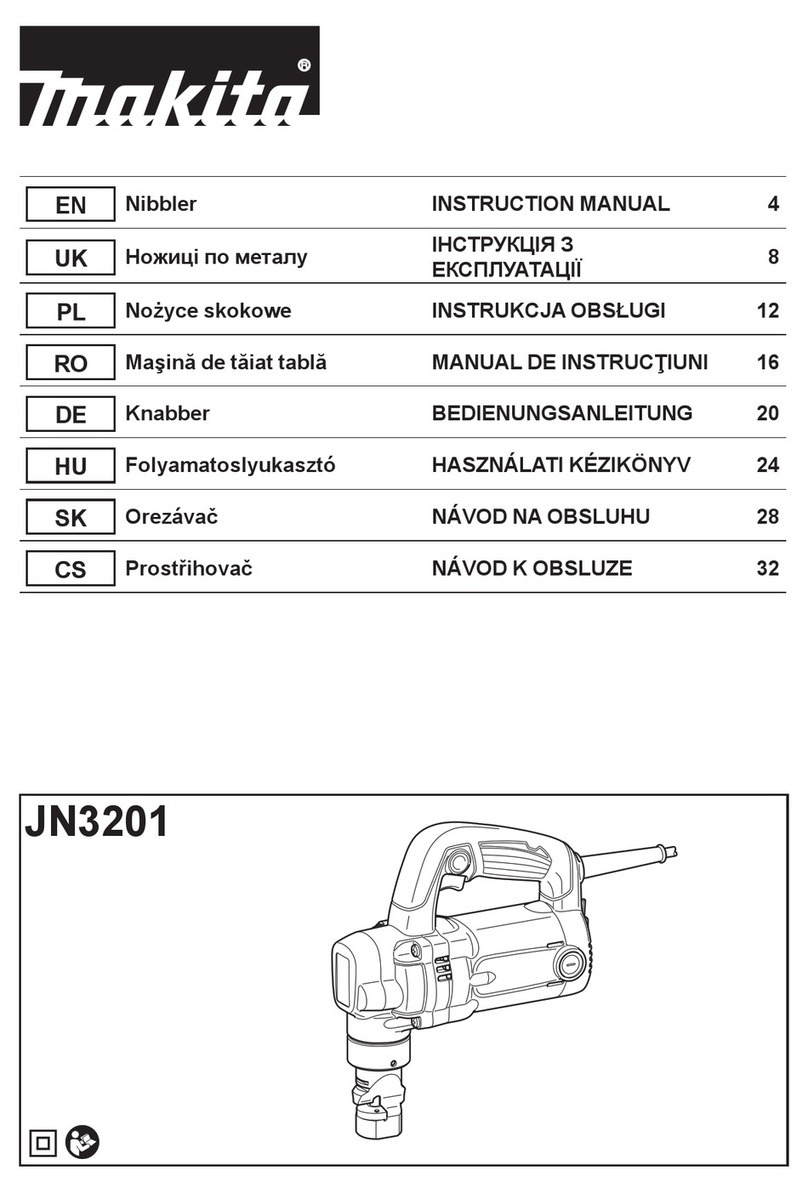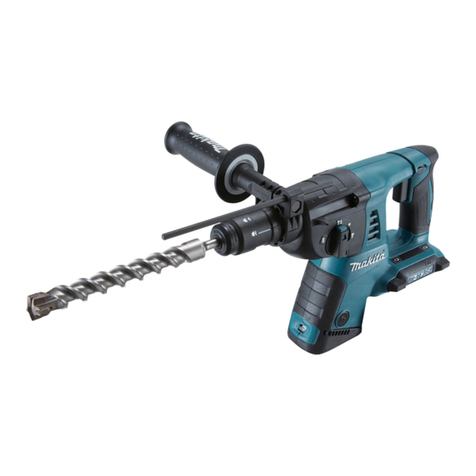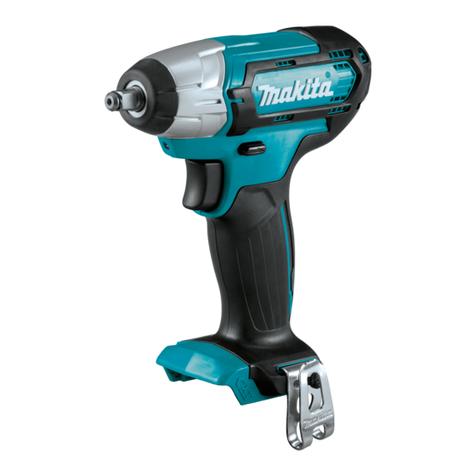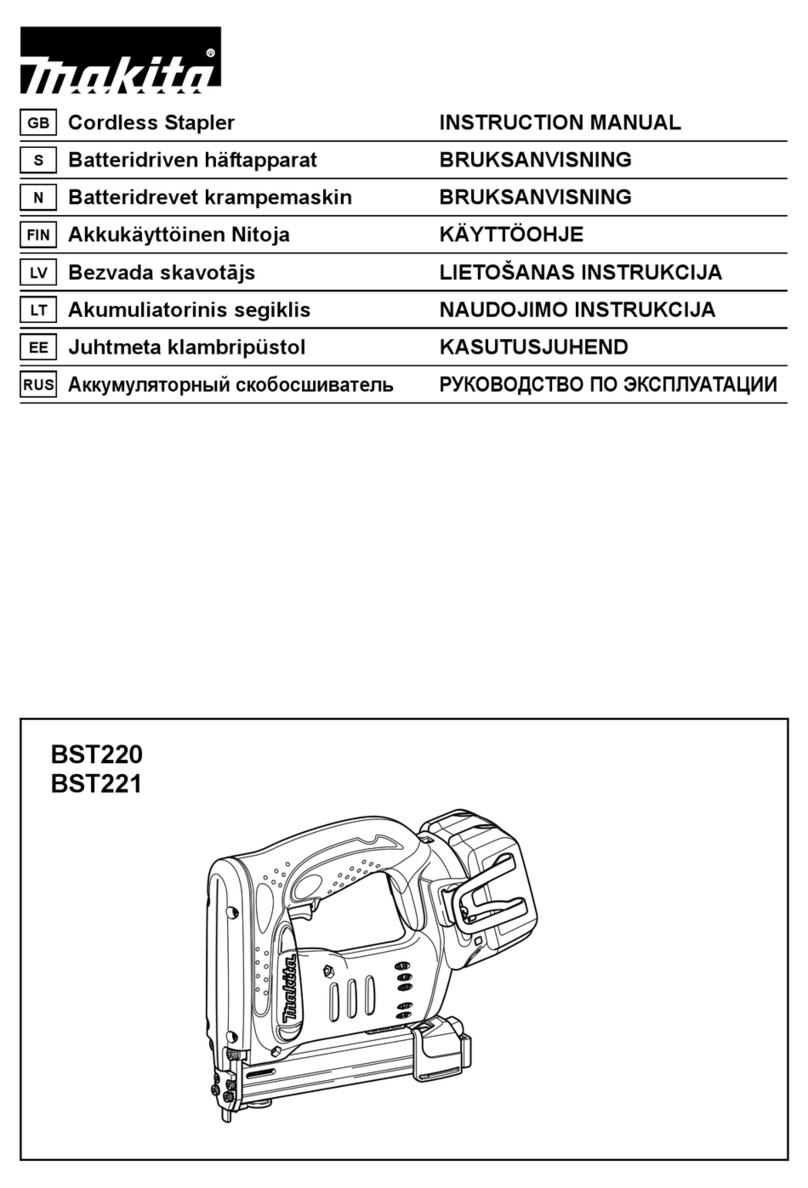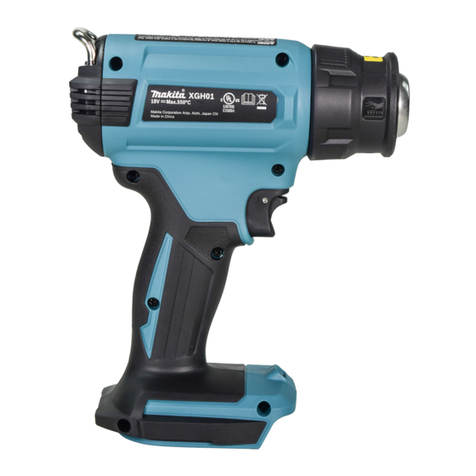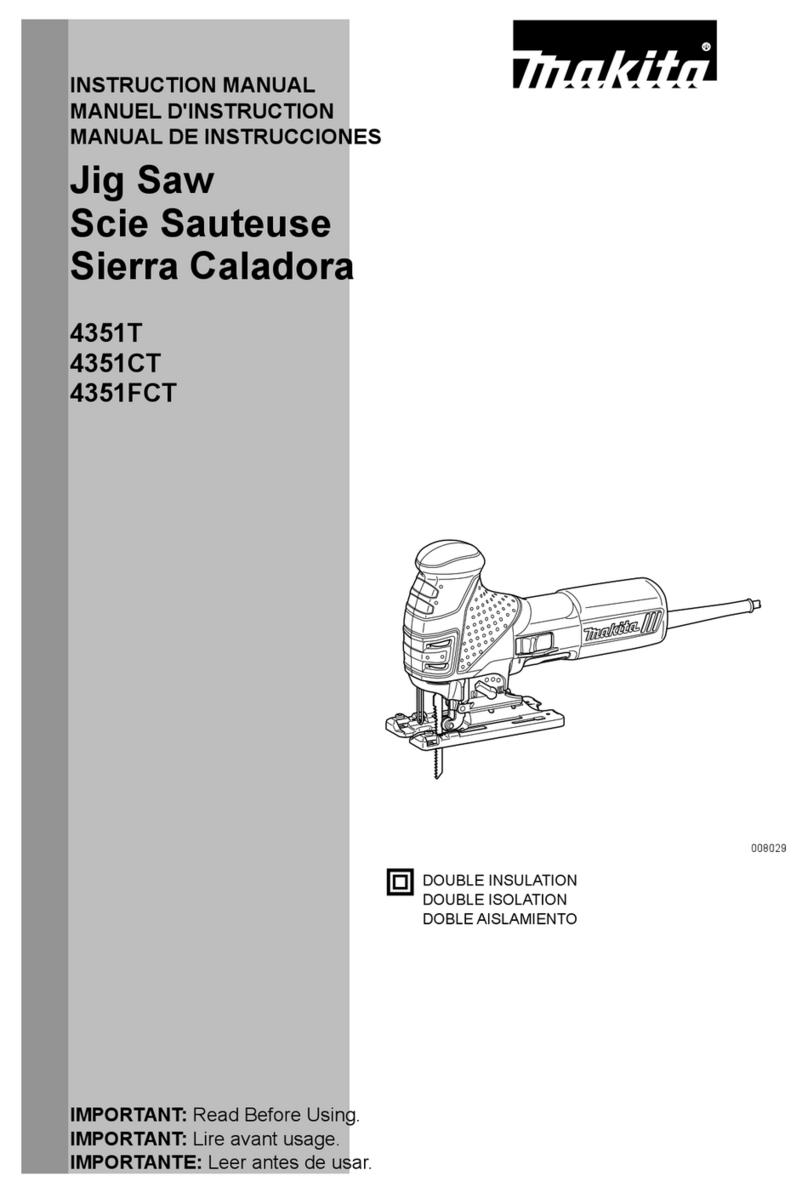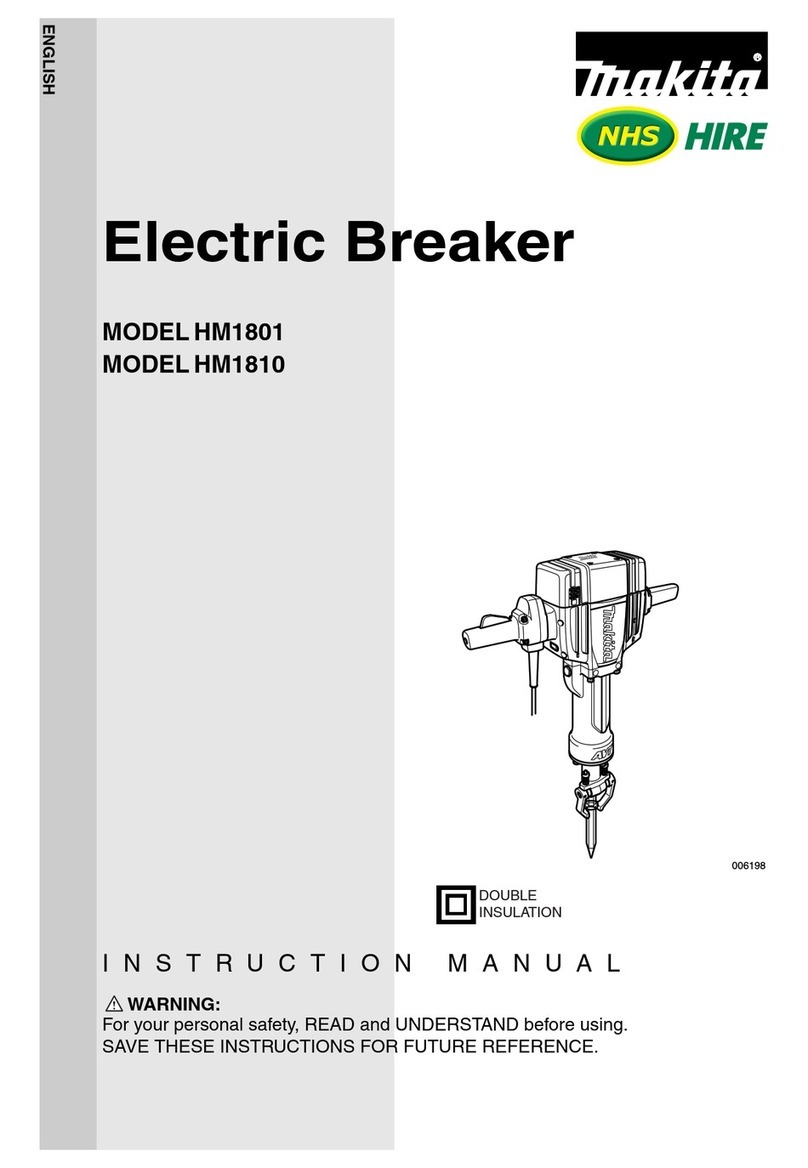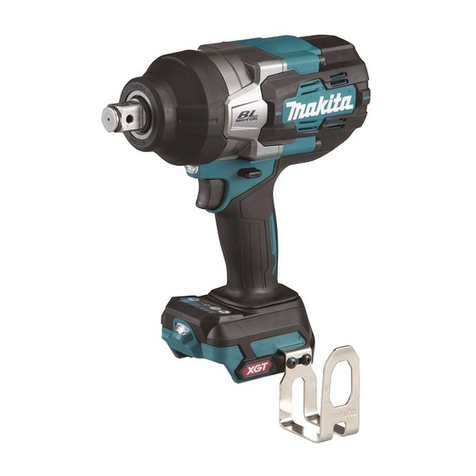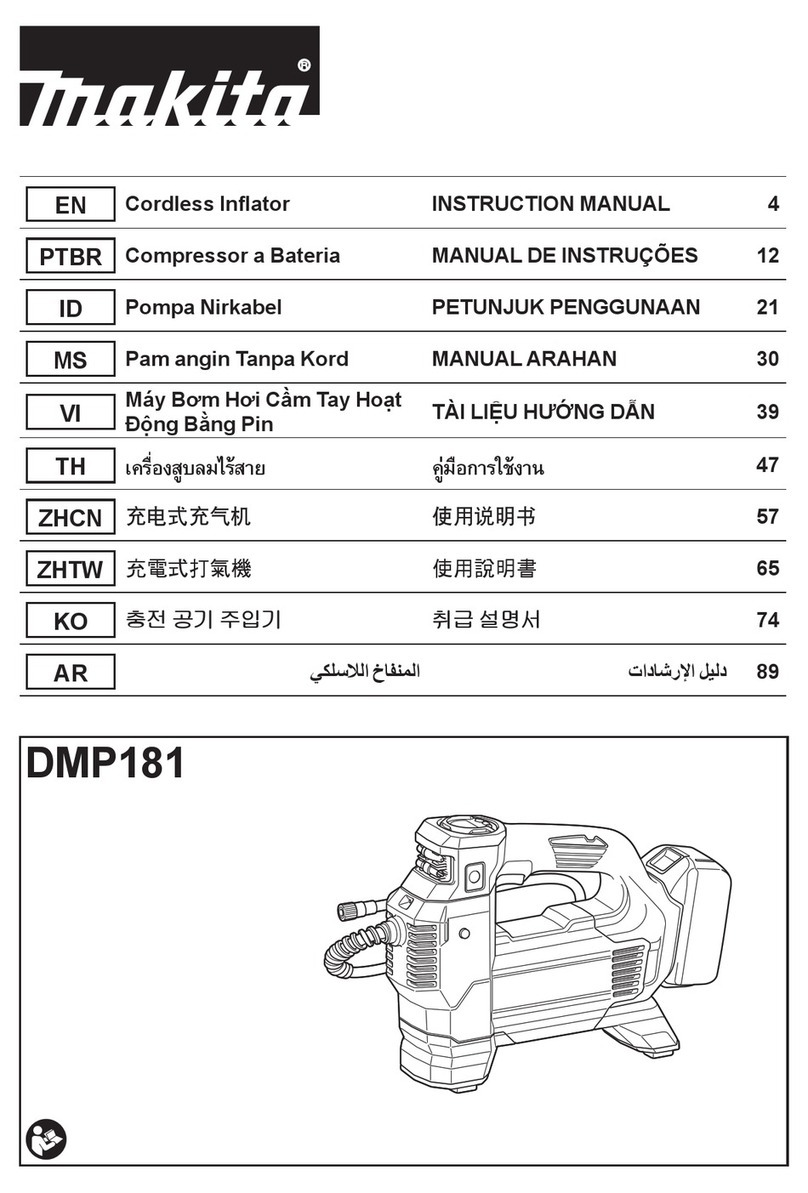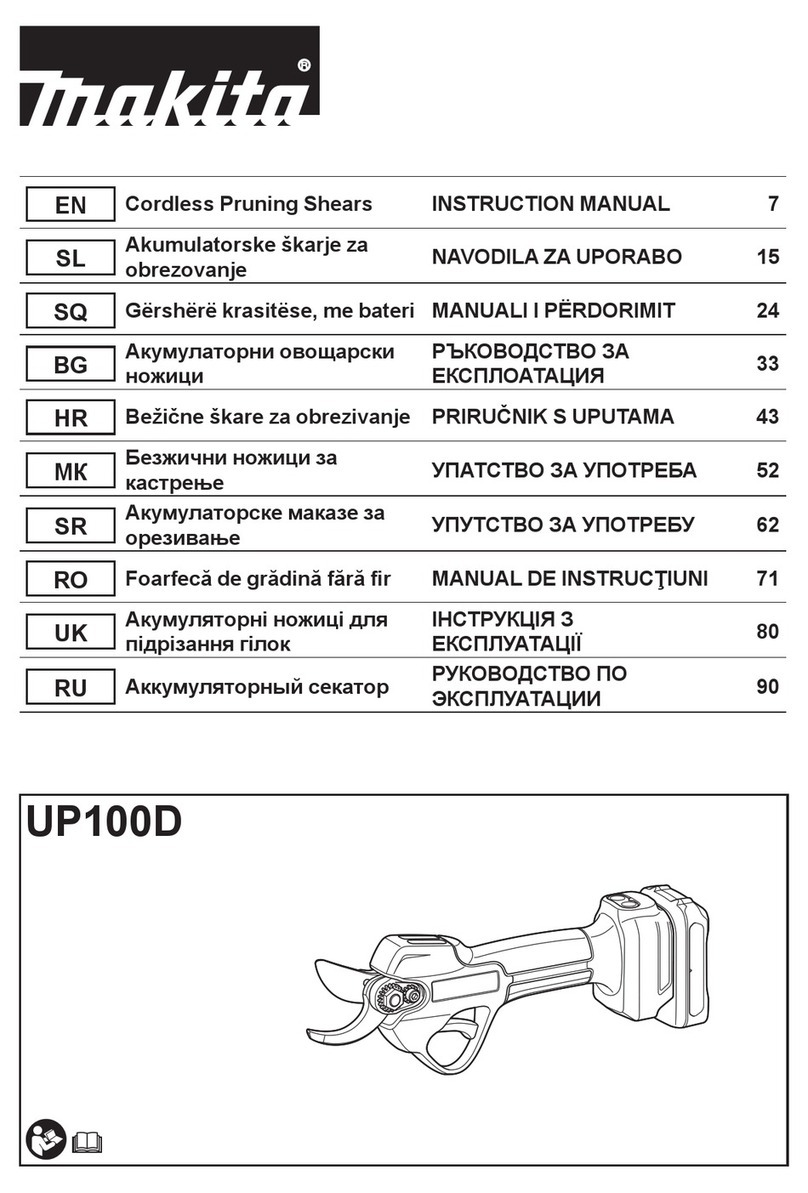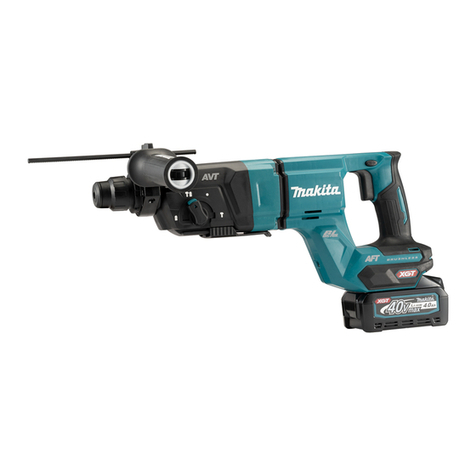
8
The angle of the fence can be adjusted between 0° and
90° (positive stops at 0°, 45° and 90°). To adjust the
angle, loosen the lock lever and tilt the fence until the
pointer points to the desired graduation on the angle
scale. Then tighten the lock lever to secure the fence.
When the fence is set at 90°, both the distance from the
center of the blade thickness to the fence and the dis-
tance from the center of the blade thickness to the bot-
tom of the base are 10 mm.
Set plate (Fig. 7 & 8)
Use the set plate as shown in Fig. 7 & 8 when cutting
slots in thin workpieces.
Switch action (Fig. 9)
CAUTION:
• Before installing the battery cartridge into the tool,
always check to see that the slide switch actuates
properly and returns to the “OFF” position when the
rear of the slide switch is depressed.
• Switch can be locked in “ON” position for ease of oper-
ator comfort during extended use. Apply caution when
locking tool in “ON” position and maintain firm grasp on
tool.
To start the tool, slide the slide switch toward the “I (ON)”
position. For continuous operation, press the front of the
slide switch to lock it.
To stop the tool, press the rear of the slide switch, then
slide it toward the “O (OFF)” position.
Indication lamp with multi function (Fig. 10)
Indication lamps are located in two positions.
When the battery cartridge is inserted on the tool with the
slide switch positioned in the “O (OFF)” position, the indi-
cation lamp flickers quickly for approximately one sec-
ond. If it does not flicker so, the battery cartridge or
indication lamp has broken.
– Overload protection
– When the tool is overloaded, the indication lamp
lights up. When the load on the tool is reduced, the
lamp goes out.
– If the tool continues to be overloaded and the indica-
tion lamp continues to light up for approximately two
seconds, the tool stops. This prevents the motor and
its related parts from being damaged.
– In this case, to start the tool again, move the slide
switch to the “O (OFF)” position once and then to the
“I (ON)” position.
– Battery cartridge replacing signal
– When the remaining battery capacity gets small, the
indicator lamp lights up during operation earlier than
enough capacity battery use.
– Accidental re-start preventive function
– Even if the battery cartridge is inserted on the tool
with the slide switch in the “I (ON)” position, the tool
does not start. At this time, the lamp flickers slowly
and this shows that the accidental re-start preven-
tive function is at work.
– To start the tool, first slide the slide switch toward the
“O (OFF)” position and then slide it toward the “I
(ON)” position.
ASSEMBLY
CAUTION:
• Always be sure that the tool is switched off and the bat-
tery cartridge is removed before carrying out any work
on the tool.
Removing or installing the blade (Fig. 11)
CAUTION:
• When installing the plate joiner blade, mount the inner
flange with the side marked “22” facing toward you.
To remove the blade, loosen the clamp screw and open
the blade cover. Push the shaft lock and loosen the lock
nut using the lock nut wrench. To install the blade, first
mount the inner flange.
Then mount the blade and the lock nut. Securely tighten
the lock nut using the lock nut wrench. Close the blade
cover and tighten the clamp screw to secure the blade
cover.
CAUTION:
• Use only Makita lock nut wrench provided to remove or
install the blade.
• Always check the depth of groove after replacing the
blade. Readjust it if necessary.
Dust bag (Fig. 12)
To attach the dust bag, fit it onto the dust nozzle. If the
dust bag becomes an obstacle to your work, turn the dust
nozzle to change the dust bag position.
When the dust bag is about half full, switch off and
remove the battery cartridge. Remove the dust bag from
the tool and pull the bag’s fastener out. Empty the dust
bag by tapping it lightly to remove as much of the dust as
possible.
NOTE:
• If you connect a Makita vacuum cleaner to your plate
joiner, more efficient and cleaner operations can be
performed.
OPERATION
How to make joints
WARNING:
• Always clamp the workpiece to the workbench before
each operation. (Fig. 13 & 14)
Corner Joint (Fig. 15, 16 & 17)
T-Butt Joint (Fig. 18, 19 & 20)
Miter Joint (Fig. 21 & 22)
Frame Joint (Fig. 23 & 24)
Edge-To-Edge Joint (Fig. 25 & 26)
To make joints, proceed as follows:
1. Fit the two workpieces together as they will appear
in the finished joint position.
2. Mark the center of the intended biscuit grooves on
the workpiece using a pencil.
NOTE:
• The center of grooves should be at least 50 mm from
the outer edge of the workpieces.
• Allow 100 mm – 150 mm between grooves in multiple
biscuit application.
3. For Corner Joint and T-Butt Joint only
Clamp the vertical workpiece to the workbench.
For Miter Joint only
Clamp one workpiece to the workbench with the
mitered edge facing up.
For Frame Joint and Edge-To-Edge Joint only
Clamp one workpiece to the workbench.
4. Set the depth of groove according to the size of bis-
cuit to be used. Refer to the table in the “Adjusting
the depth of groove” section.
